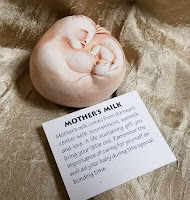There is nothing sweeter in this difficult world than finding your place, coming home, and sharing your life with loving family and true friends.
 Most of us have our humble homes, our little nests filled with our favorite things, a place to tuck our children safely in with love and lullabies , to dance, to sing, and to dream, a moveable feast of life, that infuses into the walls, the floorboards, the very foundation.
Most of us have our humble homes, our little nests filled with our favorite things, a place to tuck our children safely in with love and lullabies , to dance, to sing, and to dream, a moveable feast of life, that infuses into the walls, the floorboards, the very foundation.As the holiday season embraces us and we fill our warm dens with our tribe of family and dear friends, when the smell of spice steeps our kitchen like tea, and little trinkets are joyfully gifted and lovingly received. Let us also think of our neighbors and those in need.
For refugees and immigrant families, whose lives have been uprooted from their communities, finding no other choice but to flee from war, injustice, and violence, leaving behind their homes, their favorite things, their own spice-scented kitchens and memory-infused walls to seek refuge, shelter and new beginnings, starting over in a new place can be difficult and frightening.
What is the mission of the International Institute of Erie? What services do you provide?
Our mission: We are part of a nationwide network that assists the world’s most vulnerable people overcome social, cultural and economic barriers so that they can flourish and help local communities grow.
We provide a variety of services to assist the newest members of the Erie community. Our Reception and Placement Program (R&P) is the welcoming committee. R&P workers meet new arrivals at the airport, get them into their homes, provide cultural orientation and show them how to navigate through the city and through all the various systems they will use towards establishing their own success. Our Matching Grant Program (MG) works with our arrivals who are able to work and provides classes and support towards finding sustainable employment. We have an interpretation program to help improve communication between our new arrivals and providers. We also have a diverse portfolio of ongoing classes that assist with learning English, family support, women’s groups as well as childcare and after school programming.
Each of the individuals and families you serve are all seeking safety, freedom, and the opportunity to rebuild their lives and their futures. Many have had to flee their homes, leaving much behind, and arriving here with very little. Donations, of course, is one way the Erie community can help our new neighbors feel welcome. What are some of the more helpful donations that are needed, and where can donations be brought to?
The Erie community has always been a very giving community. Donations help us to fulfill our mission. Our families arrive with little more than their clothing, and the weather they are coming from is not the same as the weather we enjoy here in Erie. Donations of winter coats, boots, gloves and hats are always welcomed. Backpacks, school uniforms and other school supplies are extremely
useful in preparing our students for school. Household goods ranging from silverware through pots and pans in good condition are helpful in getting our households set up. Gift cards to Walmart or cash donations always seem to help us get needed supplies and household goods. Furniture donations are on an as-needed basis. All of these donations can be brought to the International Institute at 517 E. 26th Street, Erie, Pa from 8am until 4pm, Monday through Friday. If you have any questions call (814) 452-3935 ext 2021 or email jbrooks@uscri-erie.org.
Erie has long been a very welcoming community for people wanting to build a better life and continues that tradition and support. We work with a variety of landlords and employers who see the benefits of having refugees as tenants and employees. We have amazing volunteer opportunities ranging from assisting in-home set up, organization of donations, assistance with office work, etc. If someone is interested in getting involved as an employer, landlord or volunteer call (814) 452-3935.
The families and individuals arriving here are coming from many different countries, with lifestyles and culture that may have few similarities to America. What have you noticed that they like most about living in Erie, and what do you feel our community can do to help them feel more at home?
The amazing thing about refugees that arrive here in Erie is not the differences, but the similarities. People come here looking for a safe place to live, the ability to earn a living, and the opportunity for their children to achieve their dreams. Our clients love that Erie provides them those opportunities. Community members should treat them like they would treat their other neighbors. Speak to them when they have the opportunity. Make sure they feel welcomed. Ask them questions and provide them with information and help if the opportunity arises.
I have been fortunate enough to meet and know people from around the world and be a part of their success. They are defined by their love of their family, desire to build the best life possible and acceptance of things that cannot be changed. I try to build my home around those same concepts.
http://refugees.org/field-office/erie/
Follow on Facebook at: International Institute of Erie/USCRI
















